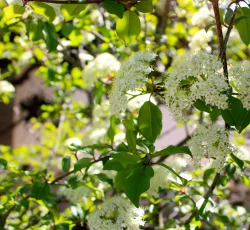
Alpine Squill
Scilla bifolia
These tiny blue flowers are some of the most shade tolerant of the spring flower bulbs.
EXPLORE THIS PLANT
These tiny blue flowers are some of the most shade tolerant of the spring flower bulbs.
EXPLORE THIS PLANT
This native plum has a sprawling habit, which showcases the beautiful white flowers in spring and the unique pink plums in midsummer. The plants become scaly with age and are somewhat disease prone.
EXPLORE THIS PLANT
This plant is ideally used in the front of the flower border and is prone to reseeding. It was a common garden plant in the 18th century.
EXPLORE THIS PLANT
Since bananas must reach a certain size to set fruit, today they are mostly used in the garden for their dramatic foliage.
EXPLORE THIS PLANT
All parts of this bold shrub are fragrant. It particularly deserves its name for the profusion of amethyst purple berries borne on its long branches.
EXPLORE THIS PLANT
Bee Balm is a tall summer-blooming perennial with brilliant red flowers subtended by a whorl of showy, red-tinged, leafy bracts. The aromatic leaves can be used for tea, but are susceptible to mildew, so this plant needs good air circulation. A member of the mint family, bee balm spreads readily by rhizomes and self-seeding to form large colonies, so be prepared to divide it every few years.
EXPLORE THIS PLANT
Beets are a popular root crop used for pickling, roasting, and salads. They come in an array of colors, including red, yellow, and red and white striped.
EXPLORE THIS PLANT
These large spring blooming shrubs with edible berries do best in natural areas where they can achieve their full size.
EXPLORE THIS PLANT
Blue sky vine is a large, twining vine that boasts beautiful pale blue flowers. It is a rapid grower and becomes quite large over the course of a season.
EXPLORE THIS PLANT
Boxwood are the quintessential southern garden hedge plant. They are popular for use in knot gardens, parterres, edging, and as topiaries. While the historic English boxwood (Buxus suffruiticosa) are especially susceptible to a devastating and widespread blight caused by the fungus Cylindrocladium buxicola, there are new varieties that have been bred to offer various levels of resistance. Several varieties of boxwood grow in the Mount Vernon gardens including: Buxus sempervirens (American), Buxus microphylla var. japonica 'Green Beauty', and 'Morris Dwarf.'
EXPLORE THIS PLANT